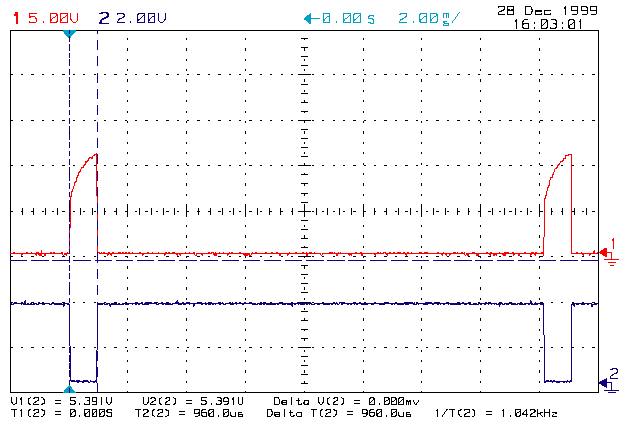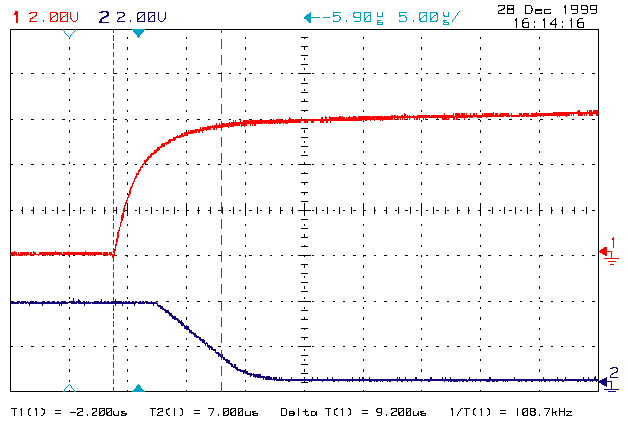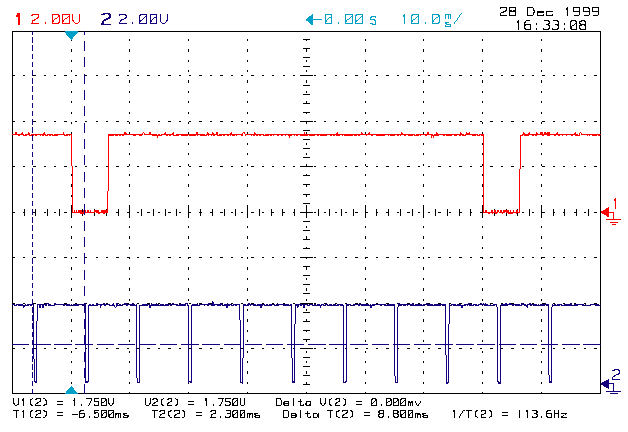| This was taken
at 930 RPM. We can see
that the trigger pulse width is about 5 degs. - #1 = Crank Trigger Input (J1-23)
|
 |
| Good Propagation Delay.
- #1 = Crank Trigger Input (J1-23)
|
 |
| Show the relationship between
CAM sensor
and the Crank Trigger signals. - #1 = 74HC14-1 CAM Sensor
|
 |
| Expanded relationship between
the CAM
input and the Cranks Trigger's. Not centered but plenty of guard band. Idling around 850 RPM. - #1 = 74HC14-1 CAM Sensor
|
 |
| A littler faster here,
around 4300 RPM.
Look how noisy the trailing edge of the CAM input is and also how much jitter there is to the next (#8) cylinder's edge. - #1 = 74HC14-1 CAM Sensor
|
 |